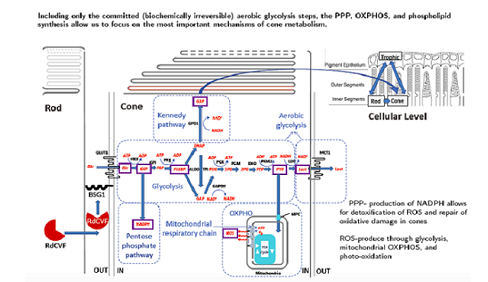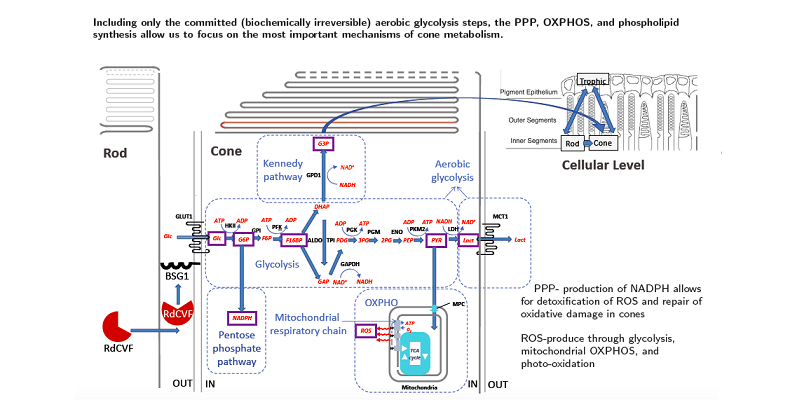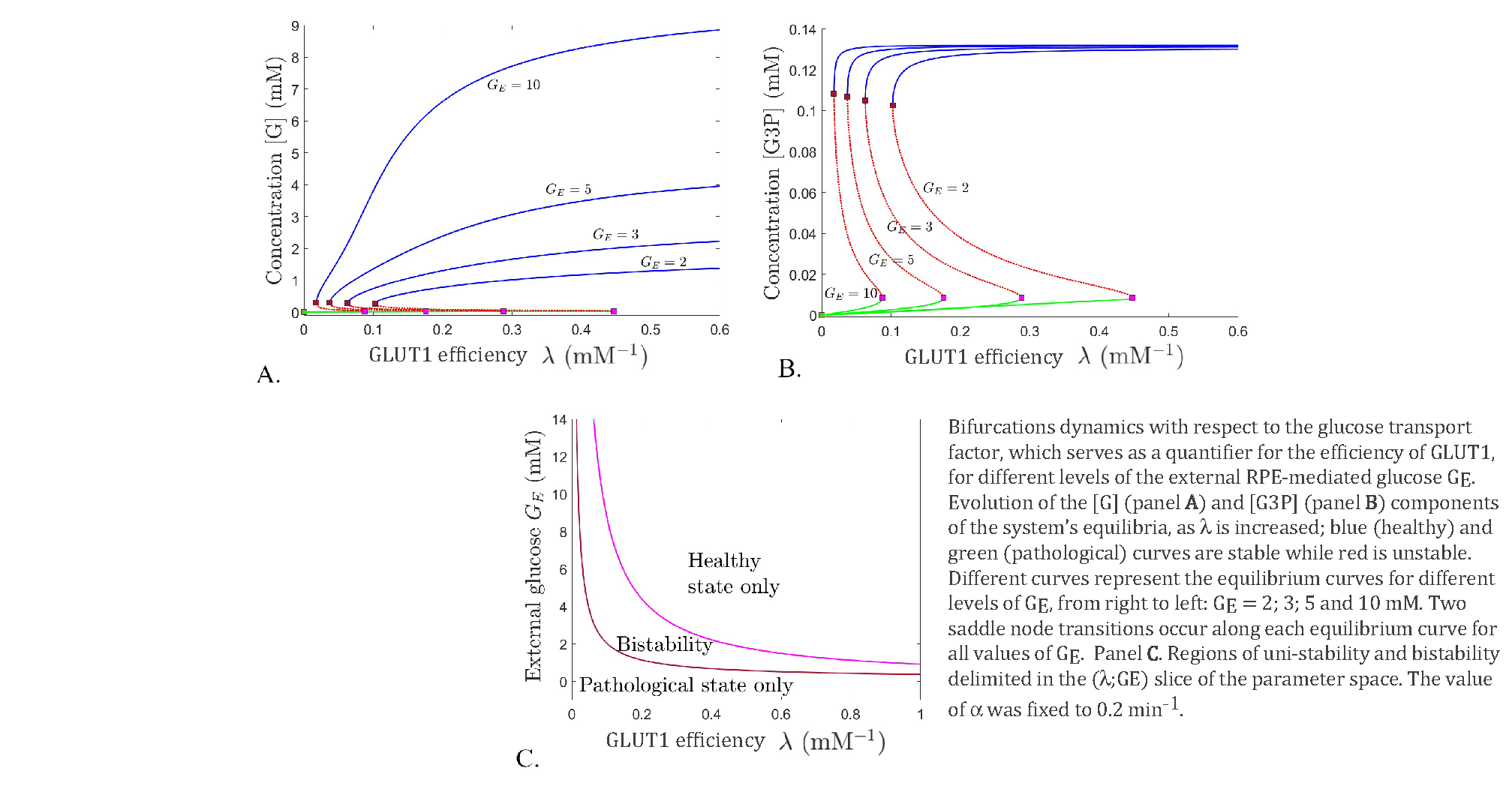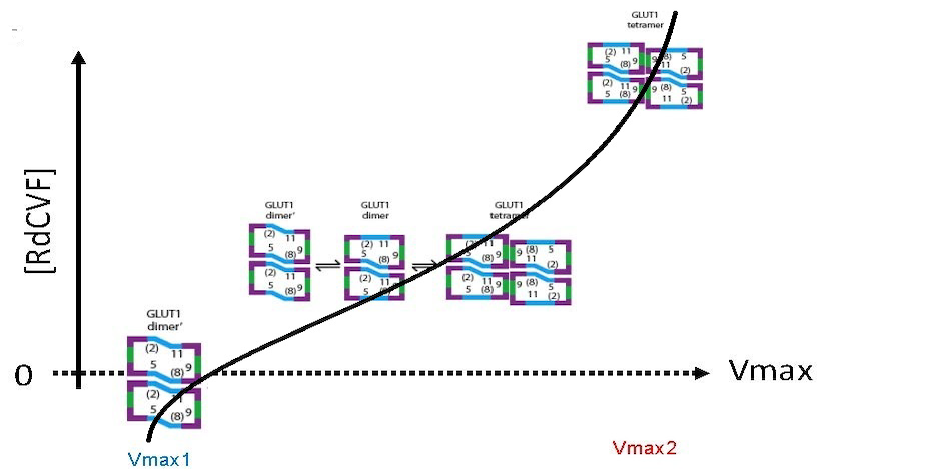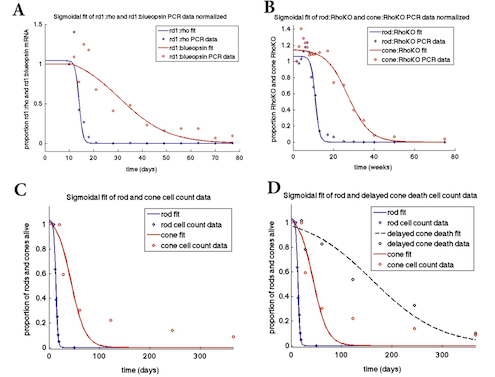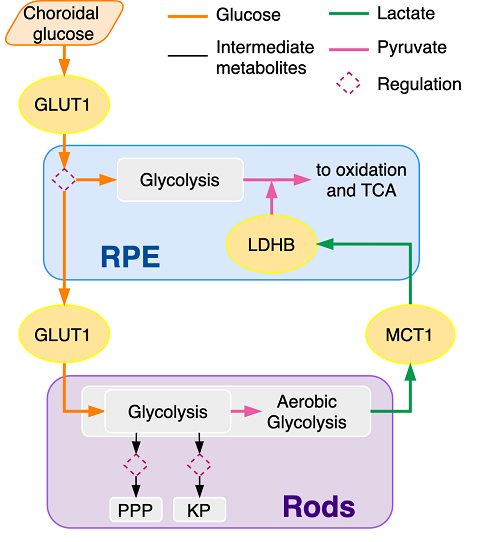Camacho, Punzo, & Wirkus, 2016. Quantifying the metabolic contribution to
photoreceptor death in retinitis pigmentosa via a mathematical model.
Journal of theoretical biology, 408.
Photoreceptor Degeneration and Retinitis Pigmentosa–
Retinitis pigmentosa (RP) is a term used to describe the heterogeneous group of inherited blindness. While most mutations occur in the rod photoreceptors, the progression of the disease is similar regardless of the mutation–the rods begin to die and when most have been lost, the cones then begin to die. As rods are responsible for night vision and peripheral vision in humans, many people don't report problems soon enough. There is currently no cure for RP and mathematical models provide insight into ways that may slow the loss of photoreceptors.
Some Publications:
Camacho, E.T., Lenhart, S., Melara, L.A., Villalobos, M.C. and Wirkus, S., 2020. Optimal control with MANF treatment of photoreceptor degeneration. Mathematical Medicine and Biology: A Journal of the IMA, 37(1), pp.1-21.
Camacho, E.T., Punzo, C. and Wirkus, S.A., 2016. Quantifying the metabolic contribution to photoreceptor death in retinitis pigmentosa via a mathematical model. Journal of theoretical biology, 408, pp.75-87.
Camacho, E.T., Melara, L.A., Villalobos, M.C. and Wirkus, S., 2014. Optimal control in the treatment of retinitis pigmentosa. Bulletin of mathematical biology, 76, pp.292-313.
Camacho, E.T. and Wirkus, S., 2013. Tracing the progression of retinitis pigmentosa via photoreceptor interactions. Journal of theoretical biology, 317, pp.105-118.
